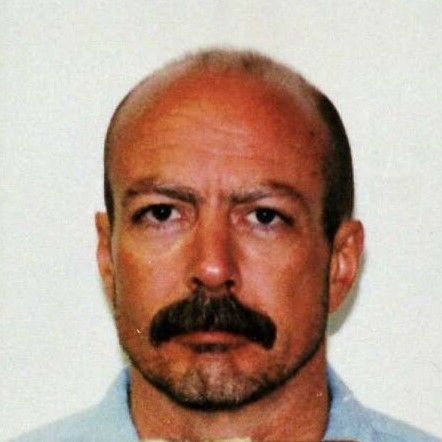
1955 - 1998
Thomas Martin Thompson
Summary
Name:
Years Active:
1981Birth:
March 20, 1955Status:
ExecutedClass:
MurdererVictims:
1Method:
StabbingDeath:
July 14, 1998Nationality:
USA
1955 - 1998
Thomas Martin Thompson
Summary: Murderer
Name:
Thomas Martin ThompsonStatus:
ExecutedVictims:
1Method:
StabbingNationality:
USABirth:
March 20, 1955Death:
July 14, 1998Years Active:
1981Date Convicted:
November 4, 1983bio
Thomas Martin Thompson was born on March 20, 1955 in Chicago, Illinois. His parents divorced when he was five years old, and he moved with his mother and sister to New York before the family eventually relocated to Orange County, California.
Thompson attended Villa Park High School, but returned to Chicago in his senior year to live with his father. Soon afterward, he enlisted in the U.S. Army, where he earned letters of commendation before receiving an honorable discharge.
After his service, Thompson returned to California, where he used the GI Bill to attend California State University, Fullerton and Santa Ana College. He pursued photography and was known among acquaintances as creative and charismatic.
murder story
On September 11, 1981, Thompson spent the evening with Ginger Fleischli, a 20-year-old college student, along with his roommate David Leitch and acquaintance Afshin Kashani. The group visited bars in Laguna Beach, California, smoked marijuana, and socialized late into the night.
Fleischli was Leitch’s former girlfriend, and their relationship had been turbulent. Weeks before her death, she had told a police officer that Leitch had threatened her life. This prior history would later play a role in the trials.
That night, Fleischli accompanied Thompson back to his apartment, where they reportedly had sex. According to Thompson, it was consensual, and he fell asleep afterward. He claimed that when he woke, Fleischli was gone. However, evidence soon contradicted his account.
On September 14, 1981, Fleischli’s body was discovered in a field, about 10 miles from Thompson’s apartment. She had been stabbed multiple times in the head. Her body and clothing showed signs of sexual assault.
Investigators linked the crime scene back to Thompson. The body had been wrapped in rope, a sleeping bag, and a blanket that originated from his apartment. Blood stains matching Fleischli’s type were found in the carpet, only six feet from Thompson’s bed.
Both Thompson and Leitch were arrested days after the murder. Leitch’s history with Fleischli and his prior threats made him an obvious suspect, but prosecutors argued that Thompson had committed the sexual assault and killing, possibly at Leitch’s urging.
Two convicted inmates later claimed they had overheard Thompson confessing to raping and killing Fleischli while in custody. This testimony, although controversial, became crucial in securing Thompson’s conviction
On November 4, 1983, an Orange County Superior Court jury convicted Thompson of first-degree murder and forcible rape. The prosecution maintained that Thompson raped and killed Fleischli in his apartment before disposing of her body.
In 1985, David Leitch was separately convicted of second-degree murder and sentenced to 15 years to life. Fibers and a shoe print linked Leitch and his car to the dumping site. Prosecutors presented the theory that Leitch wanted Fleischli killed and that Thompson carried out the murder, though the exact dynamics remained disputed.
On April 28, 1988, the California Supreme Court affirmed Thompson’s conviction and death sentence, though two of seven justices dissented.
Thompson’s appeals lasted over a decade, creating one of California’s most contentious capital punishment cases. A federal district court once overturned his rape conviction on grounds of ineffective counsel, which would have invalidated the death penalty. However, in 1996, the Ninth Circuit Court of Appeals reinstated the death sentence, ruling that evidence of rape was overwhelming and prejudice could not be proven.
In 1997, Thompson’s legal team filed more petitions, but the U.S. Supreme Court ultimately ruled against him, describing the Ninth Circuit’s late attempts to reconsider as a “grave abuse of discretion.”
Thompson’s supporters argued that his conviction rested heavily on unreliable jailhouse informant testimony and circumstantial evidence. Critics of the trial raised concerns about prosecutorial conduct, the reliance on incentivized witnesses, and whether Thompson’s defense team had adequately challenged the case.
Opponents of capital punishment highlighted Thompson’s case as an example of the flaws in death penalty jurisprudence, while prosecutors maintained that the physical evidence — including blood in Thompson’s apartment and items used to wrap the body — pointed decisively to his guilt.
On July 14, 1998, at San Quentin State Prison, Thompson was executed by lethal injection. He was 43 years old.
For his final meal, he requested Alaskan king crab with melted butter, spinach salad, pork fried rice, Mandarin-style spare ribs, a hot fudge sundae, and a six-pack of Coca-Cola. His last words were not widely recorded in media, but his execution left a legacy of debate that continues today.